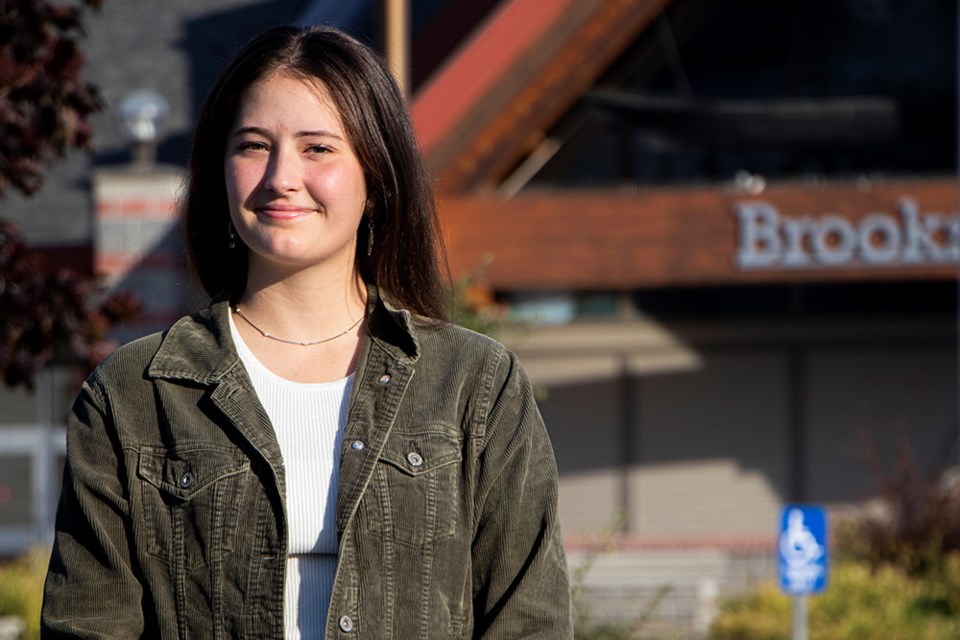About a year ago, recent high school graduate Jordana Pangburn was sitting in class when she noticed her teacher using outdated terminology while talking about trans athletes in the Olympics.
“I was made uncomfortable by it and knew [the language] wasn’t really up to date, or current or accurate,” said Pangburn.
This experience would become the flint that sparked Pangburn’s 24-page report, called LGBTQ2S+ Inclusivity at Brooks - A Student Perspective, which broke down current terminology, methods, survey results, written responses and recommendations.
Among the results, data showed 40 per cent of students surveyed described their sexual orientation as other than heterosexual. And, more than 50 per cent wanted to see more inclusive and correct terminology in school, including asking for and using correct pronouns.
Pangburn knew she wanted to make classrooms more inclusive, so after taking time to steep the idea and getting involved in the local Gender Sexuality Alliance (GSA), she took to the issue for her grade 12 capstone project.
She started with a survey to get an accurate read on student attitudes and demographics as it relates to LGBTQ2S+ communities. She wanted to show teachers and school board officials there was a problem, not with the staff or the students, per se. There was a problem with the system.
“What I had experienced wasn’t just a singular incident, and I don’t want that being repeated,” said Pangburn.
She said she still thinks conversations on these topics should happen in the classroom, but they need to be prefaced with training, support and up-to-date terminology.
“It’s really hard to have a conversation when the different parties are using words that mean totally different things,” she added.
With the support of three Brooks Secondary School staff members: a district administrator, a teacher and a member of the GSA, Pangburn refined her vision and survey methods to maintain its confidentiality while working through limitations of gathering such sensitive information in an educational setting.
After completing her survey work, she presented her report to Brooks staff and Powell River Board of Education over Zoom. She said in both cases, there were a lot of surprised reactions and appreciation for the new information.
However, Powell River City Council responded with mixed reactions, according to Pangburn.
“Half were supportive, half unsure, or very new to this conversation,” she said. “It was a little controversial.”
Her original plan was to present in front of her school, School District 47 staff and city council, but her project grew legs, and she was surprised when the invitations kept coming.
Pangburn was invited to present at the two-day Vancouver Island SOGI Summit in front of GSAs and educators from throughout the island and qathet region. She was met with great excitement and enthusiasm as they planned to implement similar surveys at their schools and school districts.
Her tour wrapped up at a province-wide SOGI educator conference.
Pangburn expects to be involved in future mentorship with groups that would like to replicate her study for their communities. She’s recently been asked to host a local LGBTQ2S+ awareness and sensitivity workshop and hopes to continue this work.
She said training, awareness and support for students and staff set everyone up for success.
“It’s incredibly hard to have an inclusive environment if staff aren’t being provided extra and in-depth sensitivity training,” said Pangburn, “or, if they’re not aware of what their student population actually consists of.”




